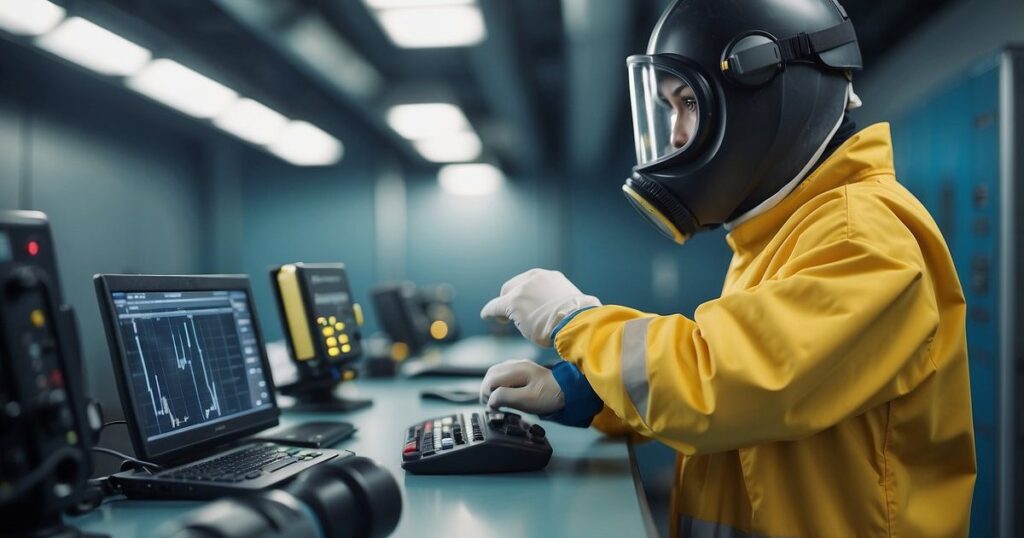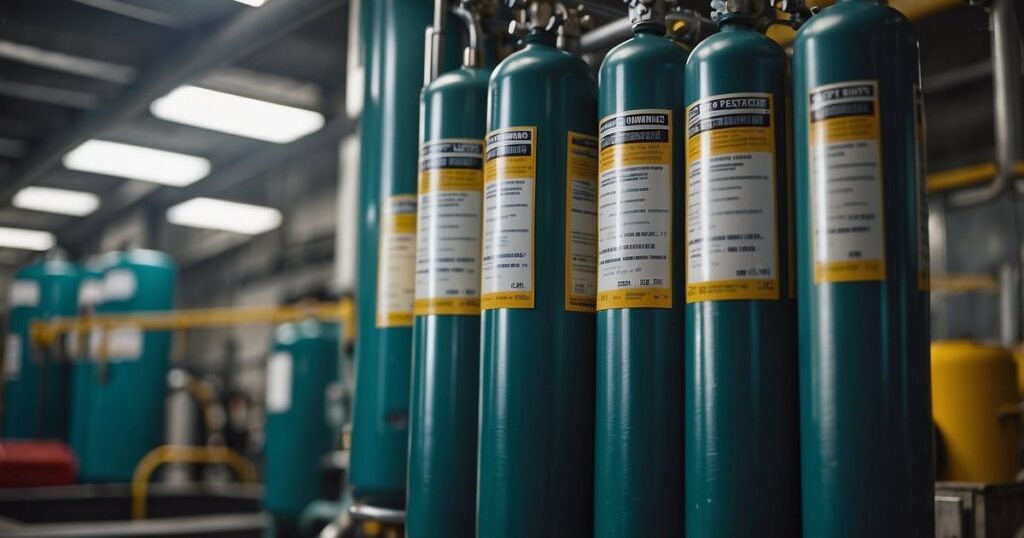Ensuring the safety of all individuals handling carbon dioxide (CO2) is paramount in both industrial and commercial settings. Establishing strict safety protocols in the handling, storing, and transporting of beverage-grade CO2 is essential to mitigate risks and maintain a secure working environment. CO2, a colourless and odourless gas, can pose various hazards if not managed properly, making adherence to industry guidelines critical.
When managing CO2, you must recognise its unique properties—such as its ability to exist only as a solid or vapour at atmospheric pressure and its heavier-than-air characteristic, which can lead to accumulation in low-lying areas. Best practices, including proper ventilation, continuous monitoring, and immediate response plans, significantly enhance safety during operations. Following these protocols can prevent dangerous incidents and ensure that everyone remains protected during CO2 handling.
CO2 Safety requires meticulous attention to established guidelines created by authorities like the American Petroleum Institute (API) and the Compressed Gas Association (CGA). Moreover, these guidelines cover all aspects, from safe handling to transportation practices. Integrating these practices into your routine handling of CO2 can lead to a safer, more efficient operational environment.
Understanding CO2 and Its Properties

Carbon dioxide (CO2) is a versatile gas with significant industrial applications. It has unique physical properties and poses specific risks that must be managed carefully in various settings.
Physical Constants of CO2
CO2 can exist in multiple states: gas, liquid, and solid. At atmospheric pressure, it exists either as a gas or as a solid, commonly known as dry ice. The triple point of CO2 (where gas, liquid, and solid phases coexist) occurs at a specific temperature and pressure, precisely -56.6°C and 5.18 bar.
CO2 is 1.5 times heavier than air, causing it to accumulate in low-lying areas. This density increases the risk of hazardous atmospheres in enclosed spaces. The vapour form is colourless and odourless and can create visible fog depending on humidity.
Unique Risks Associated with CO2
When handling CO2, it is crucial to be aware of its potential hazards. High concentrations can displace oxygen, leading to an oxygen-deficient atmosphere. Exposure to elevated levels can cause physiological effects such as laboured breathing, headache, dizziness, and even suffocation or death.
In confined spaces, the accumulation of CO2 can pose serious risks. Since it is heavier than air, it flows along the floor and gathers in trenches and basements. During a release, CO2 can form a visible vapour cloud, increasing the likelihood of injuries.
Roles in Industrial Applications
CO2 plays a vital role in various industrial applications. Also, it is utilised as a cooling agent in refrigeration and is essential in welding processes, where it acts as a shielding gas to protect weld areas. In fire extinguishers, CO2 helps to combat fires by displacing oxygen and reducing heat.
Furthermore, CO2 is employed in the food and beverage industry for carbonation and preservation. Its solid form, dry ice, is widely used for cold storage and temperature control during the transportation of perishable goods.
In addition, employing CO2 in industrial settings requires strict safety protocols to mitigate risks and ensure safe operations.
Safe Handling and Storage Practices

When dealing with carbon dioxide (CO2), maintaining safety involves strict adherence to regulations and established protocols. Ensuring proper storage, handling, and emergency response is critical for safe operations.
Operational Safety Standards
CO2 handling requires precise safety measures. Always use personal protective equipment such as gloves, goggles, and face shields. Ensure proper ventilation in storage areas to avoid hazardous atmospheres. Regularly inspect cylinders, hoses, and connections for signs of wear. Avoid storing CO2 in confined spaces and keep storage areas away from open flames and electrical circuits.
Furthermore, use equipment that meets industry standards. Check API and Compressed Gas Association guidelines for specific handling and storage practices. Have accredited fire extinguishers on-site and ensure they are accessible. Follow supplier instructions and keep safety data sheets available for reference.
Emergency Response and Training
Effective emergency response and training are crucial for CO2-related incidents. Train personnel in the use of safety equipment and conduct regular emergency preparedness drills. Familiarise yourself with first aid measures for CO2 exposure and ensure all team members know the location of emergency supplies.
Develop protocols for pipeline incidents and hazardous leaks. Ensure emergency exits and equipment are clearly marked and accessible. Regularly review and update your emergency response plans based on new insights and industry publications. Post emergency contact information prominently within the storage and handling areas.
Regulatory Compliance and Documentation
Adhering to OSHA standards, codes, and regulations is essential. Keep detailed records of CO2 storage, handling protocols, and training sessions. Ensure cylinders are properly labelled and maintain quality control by following established storage guidelines.
Conduct periodic audits to ensure compliance with Safety Measures. Keep documentation of any accidents or near-misses and review these incidents to improve safety practices. Stay informed about updates to compressed gas regulations and integrate best practices from authoritative bodies such as the Compressed Gas Association.
Frequently Asked Questions
Handling CO2 safely requires knowledge of operational precautions, concentration hazards, storage regulations, and monitoring practices. Personal protective equipment and adherence to OSHA standards are essential for ensuring a safe working environment.
What precautions should be taken when operating CO2 tanks?
You should always check for leaks with a soapy water solution before use. Ensure tanks are stored upright and secured to prevent tipping. Operate in well-ventilated areas to mitigate the risk of CO2 accumulation. Use proper equipment, such as regulators and valves, designed for CO2.
At what concentration does CO2 become hazardous to human health?
CO2 becomes hazardous at concentrations of 5,000 ppm (0.5%) over an 8-hour workday, according to OSHA. Concentrations above 40,000 ppm (4%) can be life-threatening. Symptoms of overexposure include headaches, dizziness, shortness of breath, and confusion.
What are the storage regulations for CO2 cylinders?
CO2 cylinders must be stored in a dry, well-ventilated area away from direct sunlight and sources of heat. Store them upright and secure them to prevent falling. It is crucial to keep them away from corrosive substances and ensure they are checked regularly for any signs of damage.
How should CO2 exposure be monitored in the workplace?
Utilise CO2 detectors and alarm systems that comply with industry standards. These devices should be placed in areas with potential CO2 accumulation, such as storage rooms and confined spaces. Regularly calibrate and maintain these detectors to ensure accurate readings and timely alerts.
What types of personal protective equipment are recommended for CO2 handling?
Employ respiratory protection such as masks or respirators when working in areas with potential CO2 leaks. Gloves and safety goggles are also recommended to protect against low-temperature burns and eye irritation. Wear suitable protective clothing to guard against frostbite caused by handling cold CO2 equipment.
What are the Occupational Safety and Health Administration (OSHA) standards for CO2 environments?
OSHA requires that CO2 levels in the workplace do not exceed 5,000 ppm (0.5%) over an 8-hour period. Emergency procedures must be in place to deal with leaks or overexposure. Training for workers handling CO2 is also mandatory to ensure they understand the risks and safety measures.


